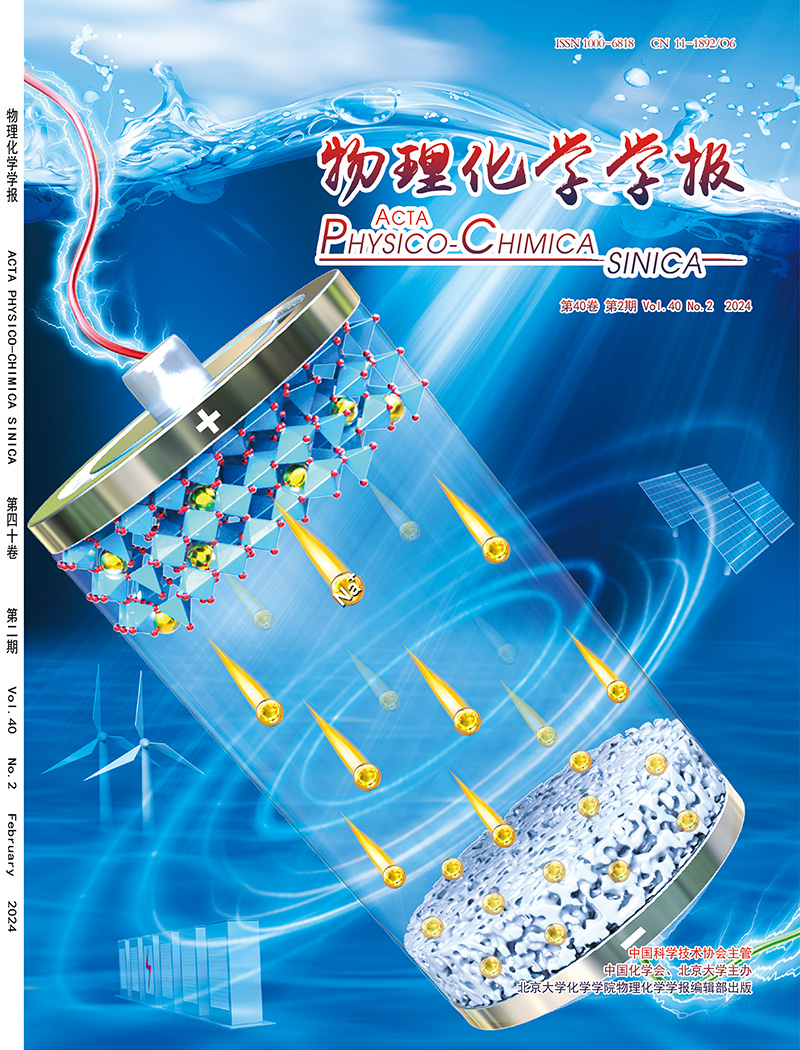Highly Efficient InOOH/ZnIn2S4 Hollow Sphere S-Scheme Heterojunction with 0D/2D Interface for Enhancing Photocatalytic CO2 Conversion
IF 10.8
2区 化学
Q1 CHEMISTRY, PHYSICAL
引用次数: 0
Abstract
S-scheme heterojunction system represents a highly efficient strategy for photocatalytic applications as it can simultaneously facilitate photogenerated charge carrier separation and enhance the reduction-oxidation potentials of the photocatalyst. Despite its gigantic potential, the photocatalytic CO2 conversion efficiency of the S-scheme heterojunction remains limited mainly attributed to the sluggish interfacial charge carrier migration and poor light utilization efficiency. Herein, we prepare an InOOH/ZnIn2S4 hollow sphere S-scheme heterojunction with 0D/2D contact interface for enhancing photocatalytic CO2 conversion performance. Specifically, the hollow sphere morphology can cause the multireflection of incident light within the photocatalyst leading to enhanced light absorption of the photocatalyst. In addition, the 0D/2D contact interface can facilitate the photogenerated charge carrier migration transfer over the InOOH/ZnIn2S4 S-scheme heterojunction. Furthermore, combining in situ irradiated X-ray photoelectron spectroscopy (ISIXPS) characterization and radicals trapping test, it is affirmed the accumulation of photogenerated holes and electrons respectively on InOOH and ZnIn2S4, which is beneficial for the effective utilization of photogenerated charge carriers. As a result, the photocatalytic CO2 conversion performance of the optimized InOOH/ZnIn2S4 is ca. 25.8 times higher than that of pristine ZnIn2S4. Our reported results demonstrate a facile yet effective strategy for enhancing the interfacial photogenerated charge carrier migration and light utilization efficiency of S-scheme heterojunction.
- Download: Download high-res image (98KB)
- Download: Download full-size image
具有0D/2D界面的高效InOOH/ZnIn2S4空心球s型异质结增强光催化CO2转化
s型异质结体系是一种高效的光催化策略,因为它可以同时促进光生载流子的分离,并提高光催化剂的还原氧化电位。尽管具有巨大的潜力,但s型异质结的光催化CO2转化效率仍然有限,主要原因是界面电荷载流子迁移缓慢,光利用效率不高。本文制备了具有0D/2D接触界面的InOOH/ZnIn2S4空心球s型异质结,以提高光催化CO2转化性能。具体而言,空心球体形态可以引起入射光在光催化剂内的多次反射,从而增强光催化剂的光吸收。此外,0D/2D接触界面有利于InOOH/ZnIn2S4 S-scheme异质结上光生电荷载流子迁移转移。结合原位辐照x射线光电子能谱(ISIXPS)表征和自由基捕获试验,证实了InOOH和ZnIn2S4上分别存在光生空穴和电子的积累,有利于光生载流子的有效利用。结果表明,优化后的InOOH/ZnIn2S4光催化CO2转化性能约为原始ZnIn2S4的25.8倍。我们的研究结果证明了一种简单而有效的策略可以提高S-scheme异质结的界面光生载流子迁移和光利用效率。下载:下载高清图片(98KB)下载:下载全尺寸图片
本文章由计算机程序翻译,如有差异,请以英文原文为准。
求助全文
约1分钟内获得全文
求助全文

 求助内容:
求助内容: 应助结果提醒方式:
应助结果提醒方式:


